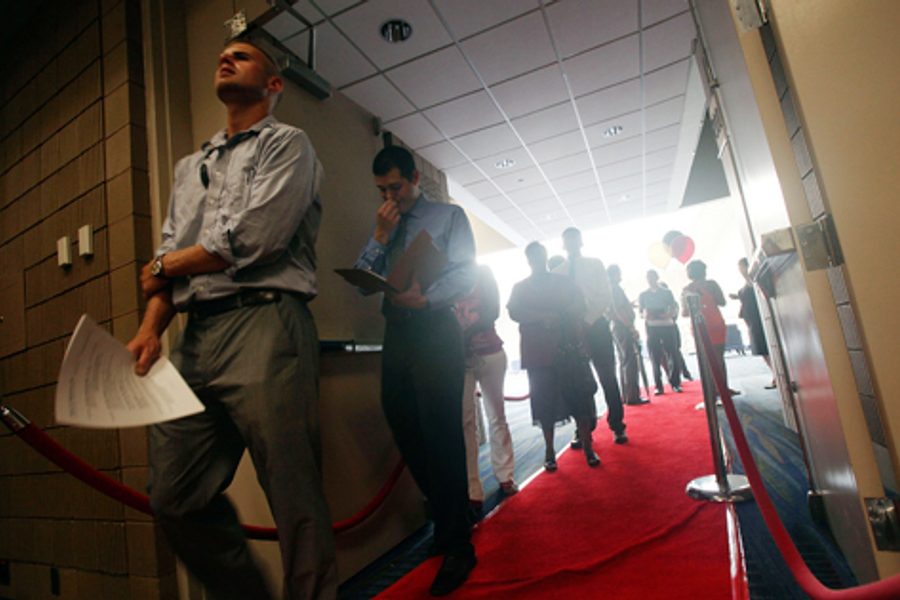
Even if they sometimes hesitate to call it a second stimulus, more progressive politicians and policy analysts are talking about the need for strong, new federal action to create jobs.
Despite the effects of the stimulus legislation – which has created or saved as many as 250,000 jobs a month since April, layoffs continue and job openings are declining. Last Friday, the Labor Department announced there were 6.3 job seekers for every job opening in August, up from 6.0 in the previous month.
Many analysts – and even the White House–recognized in February that the original version of the $787 billion American Relief and Recovery Act was inadequate even before it was trimmed and watered down, and the problem of joblessness is greater than expected.
The House has voted to extend unemployment benefits in states with high unemployment, and the Senate is moving to pass a broader version. That not only helps the growing ranks of the jobless but also increases demand for goods and services.
There now seems to be growing interest in a new temporary jobs tax credit for employers that would roughly offset social security payroll tax costs of new hiring. Although backed by former Labor Secretary Robert Reich and the progressive Economic Policy Institute president Larry Mishel, it could appeal to some conservatives as a tax cut — but not Wall Street Journal editorialists.
They cite criticism of such a tax credit by liberals as doing nothing to create demand for products that would merit new hiring. But Mishel argues it could encourage employers who are hesitant but thinking about hiring.
Center for Economic and Policy Research economist Dean Baker would link a payroll tax credit for all workers to employers reducing their hours of work but at the same pay, thus creating demand for new employees. (Reich also suggests simply a one-year payroll tax holiday for the first $20,000 of income – a tax cut for workers and employers that would be skewed to help lower-income workers.)
Mishel, like all liberal analysts, proposes an extension of the safety net – unemployment insurance, access to health insurance, and food stamps. He and Reich also advocate more aid to state governments. “Helping state and local governments avoid job cuts is as effective as creating new jobs,” Mishel testified to a house Ways and Means subcommittee last week. Reich proposes using existing authority under the stimulus legislation and the Troubled Asset Relief Program to create a single state aid fund.
Mishel recommends increased infrastructure spending – which may be slow to kick in, but will still be needed since high unemployment is likely through early 2011. And he proposes funding for public service as “a direct and cost-effective way to create jobs.” A staple of Democratic anti-recession policy proposals since FDR, public service job creation has received little attention in this downturn.
Worries about the cost of these programs or increases to the deficit are misguided. High joblessness creates huge deficits in production, income and taxes, and failure to spend to create jobs is more costly in human and social losses than the deferred bill for stimulus programs that so far have been half the size needed.
But legislators should get the biggest employment bang for stimulus bucks. Currently, the least effective — an employer tax credit for hiring — seems more likely to win support than more effective measures like aid to states, public service jobs, or a social security holiday for reducing worktime.
David Moberg, a former senior editor of In These Times, was on staff with the magazine from when it began publishing in 1976 until his passing in July 2022. Before joining In These Times, he completed his work for a Ph.D. in anthropology at the University of Chicago and worked for Newsweek. He received fellowships from the John D. and Catherine T. MacArthur Foundation and the Nation Institute for research on the new global economy.








